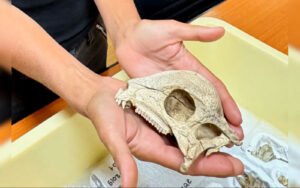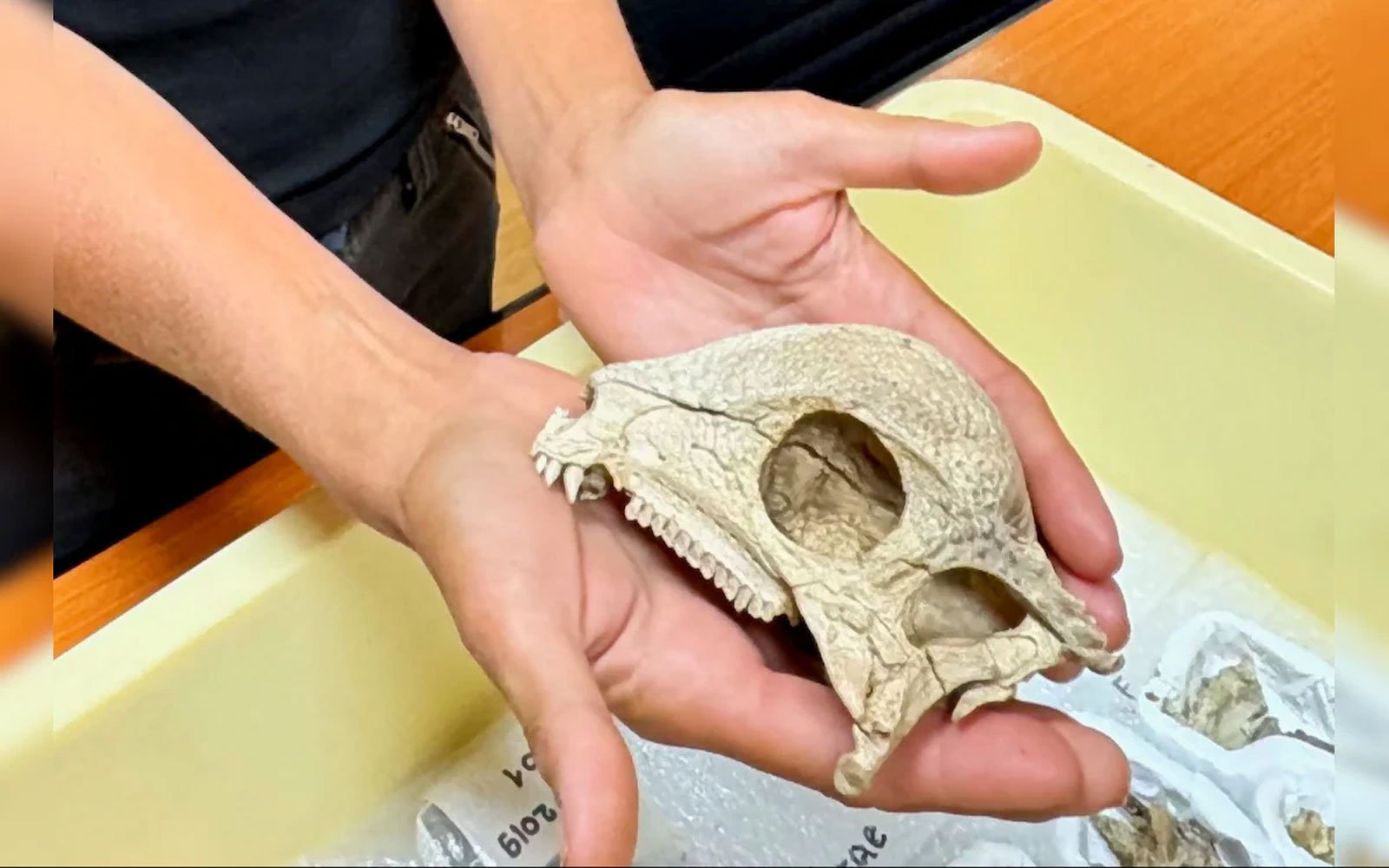Oldest Dome Headed Dinosaur Fossil Unearthed in Mongolia: Zavacephale rinpoche Discovery
Introduction – A Breakthrough in Dinosaur Research
Paleontologists in Mongolia have uncovered the oldest dome-headed dinosaur fossil ever found. The remarkable discovery, published in the journal Nature, sheds new light on the anatomy and evolution of pachycephalosaurs, a rare group of herbivorous dinosaurs known for their thick, dome-shaped skulls.
The Discovery Site in Mongolia
The fossil was unearthed in the Khuren Dukh formation of the Gobi Desert, one of the richest fossil beds in the world. This region has long been a treasure trove for paleontologists and continues to reveal crucial insights into dinosaur evolution.
Introducing Zavacephale rinpoche
The newly identified species has been named Zavacephale rinpoche. Believed to have lived between 108 and 115 million years ago, this juvenile specimen represents a previously unknown species within the pachycephalosaur family.
Significance of the Fossil
Unlike earlier discoveries that consisted mostly of skull fragments, this find is the most complete pachycephalosaur skeleton ever recovered. Researchers estimate that more than half of the skeleton has been preserved, making it a landmark discovery in dinosaur paleontology.
Anatomy of the Dinosaur
The fossilized juvenile measured about three feet in length. It had long legs, short arms, and small hands. Interestingly, scientists also discovered gastroliths—small stones in its stomach—which the dinosaur used to grind down vegetation, a common adaptation in herbivores.
 Early Development of the Dome
Early Development of the Dome
Although the specimen was not fully grown, the skeleton already displayed the pachycephalosaur’s iconic feature: a thickened cranial dome. According to lead researcher Tsogtbaatar Chinzorig, this completeness allows scientists to study how the dome developed during different growth stages.
Why the Dome Matters
The purpose of the dome-shaped skull remains a mystery. Some scientists argue that pachycephalosaurs may have used them for head-butting competitions, similar to modern-day rams, while others suggest they may have served as display features to attract mates.
A Rare Dinosaur Group
Pachycephalosaurs are among the least understood dinosaurs. Fossil evidence has always been scarce—paleobiologist Michael Pittman notes that the global collection of pachycephalosaur fossils could “fit into one or two bathtubs.” This makes the Mongolian discovery exceptionally valuable.
Pushing Back the Timeline
This fossil is about 15 million years older than previously known pachycephalosaur remains. Its age offers a clearer picture of the group’s early evolution and confirms that dome-headed dinosaurs had already developed their distinctive skulls much earlier than expected.
The Juvenile Dinosaur’s Growth Potential
While Zavacephale measured only three feet long, later pachycephalosaurs grew much larger, reaching up to 14 feet in length. Studying juveniles helps researchers understand how body proportions and skull thickness changed with age.
Global Importance of the Find
Beyond Mongolia, this fossil will influence how scientists interpret the evolutionary history of pachycephalosaurs in both Asia and North America, where these dinosaurs once roamed. It provides a vital link in the timeline of dome-headed dinosaur evolution.
The Role of Mongolia in Paleontology
Mongolia’s Gobi Desert has been home to many groundbreaking discoveries, including the first dinosaur eggs ever found. This latest fossil strengthens Mongolia’s reputation as one of the world’s most important sites for dinosaur research.
How Zavacephale Adds to Scientific Knowledge
By analyzing this fossil, paleontologists can now study how skeletal features like limb structure, body proportions, and skull development evolved over millions of years. It provides the missing details that skull-only specimens could not offer.
Public Fascination with Dome-Headed Dinosaurs
Thanks to appearances in pop culture, particularly the Jurassic Park films, dome-headed dinosaurs have gained widespread recognition. This new fossil is expected to spark even greater public interest in these enigmatic creatures.
Evolutionary Questions Answered
The fossil confirms that dome-headed dinosaurs had already evolved their signature cranial structures in the Early Cretaceous Period, showing remarkable evolutionary stability over millions of years.
Conclusion – Unlocking Prehistoric Secrets
The discovery of Zavacephale rinpoche, the oldest and most complete dome-headed dinosaur fossil, marks a milestone in paleontology. Not only does it push back the evolutionary timeline of pachycephalosaurs, but it also provides researchers with a rare opportunity to study their anatomy in detail. As science progresses, this fossil will continue to reveal secrets about one of the most mysterious dinosaur families.
Related coverage: More Science & Nature News
https://newsupdates.info









